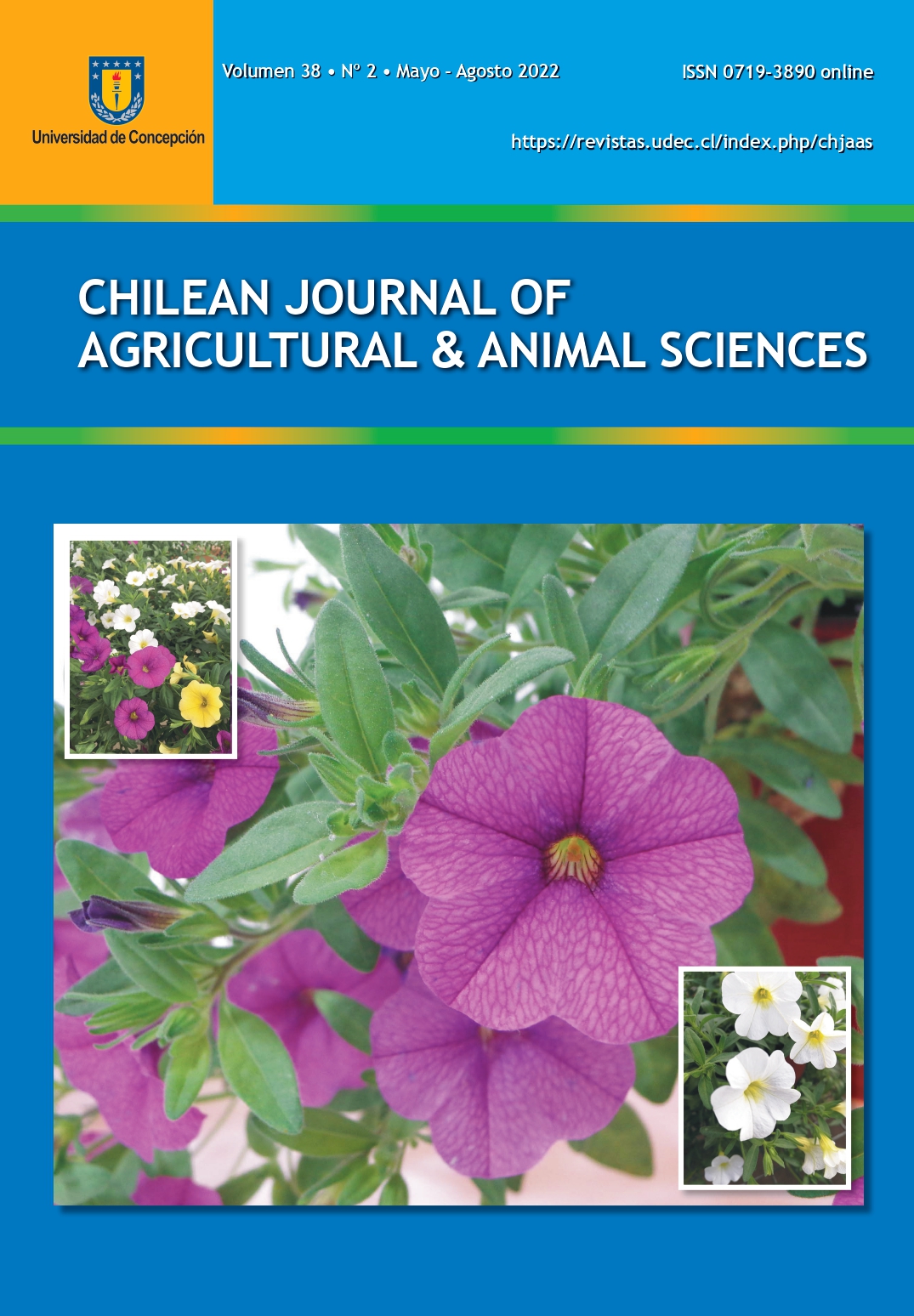RESPONSE OF MAIZE (Zea mays L.) TO FOLIAR APPLICATION OF LIQUID ORGANIC FERTILIZERS
DOI:
https://doi.org/10.29393/CHJAA38-14RMPO40014Keywords:
bovine manure , biofertilizers , maize ear , maize productivity, sustainable agricultureAbstract
Maize (Zea mays L.) is a worldwide staple food, cultivated using mainly mineral fertilizers and other soil degradation practices. Biofertilizers are an alternative to help limit soil degradation and improve crop productivity. This research aims to determine maize response to foliar applications of liquid organic fertilizers. A completely randomized block design with five treatments was used: hydrolyzed fish (T1), Neem oil (T2), digested liquid bovine manure (T3), NPK fertilization (T4), and the control (T5). The results show that maize plants with conventional fertilization reached the lowest number of days to male (51.50) and female flowering (53.50), and the highest ear height (101.25 cm). Maize plants with NPK fertilization and those receiving liquid bovine manure recorded the highest values in extended ear length (18.17 and 16.44 cm, respectively); number of grains per row (32 and 29 units, respectively); and grain yield (7.32 and 6.95 t?ha-1 respectively). There were no significant differences in the number of rows per ear. The highest cost-effectiveness was obtained with liquid bovine manure (54.01%), followed by NPK (52.61%). In conclusion, foliar applications of digested liquid bovine manure result in similar yields and higher cost-effectiveness to those obtained by conventional NPK fertilization.
Downloads
Published
How to Cite
Issue
Section
Copyright (c) 2022 Percy Díaz-Chuquizuta, Edison Hidalgo-Melendez, Cynthia Cabrejo-Sánchez, Ofelia Andrea Valdés-Rodríguez

This work is licensed under a Creative Commons Attribution 4.0 International License.







